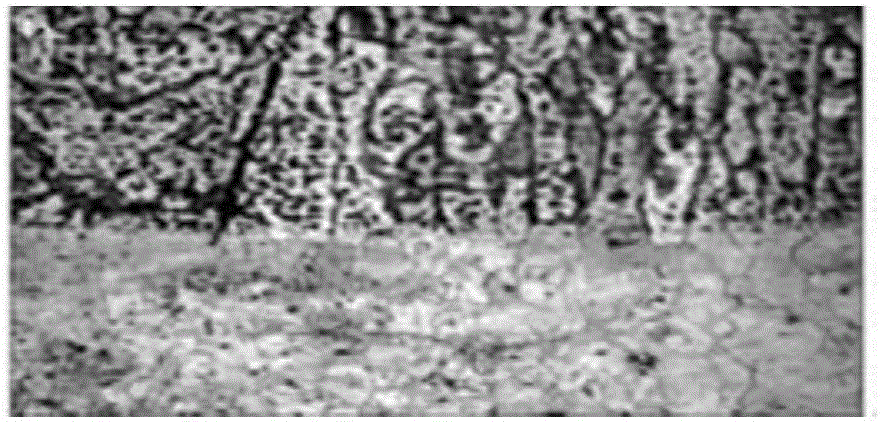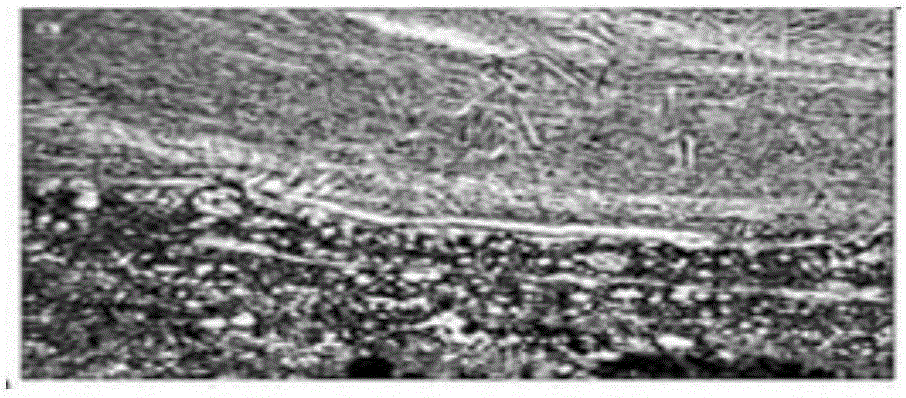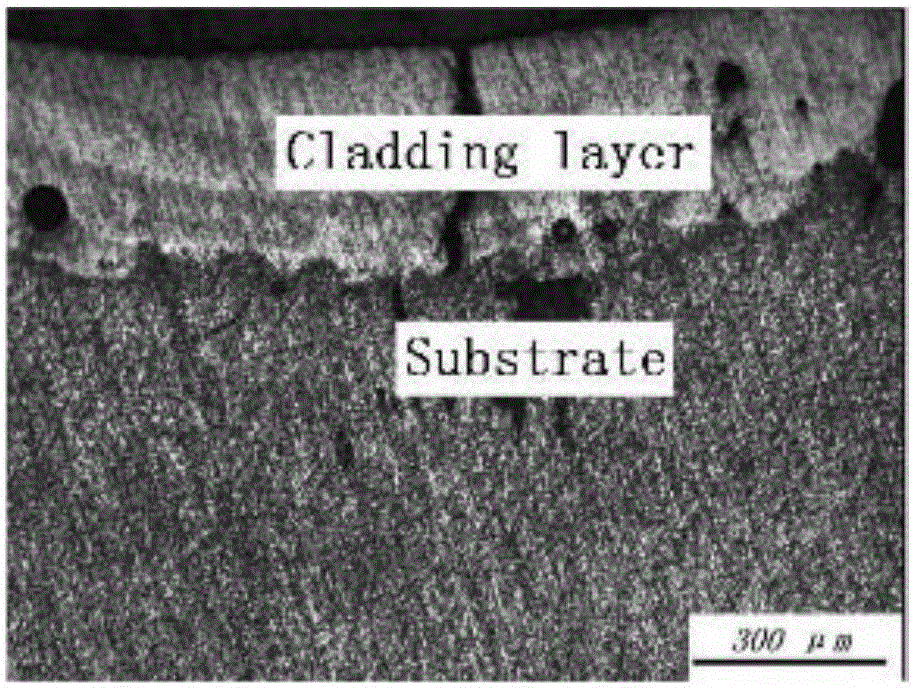Copper matrix surface laser cladding technology
A laser cladding and matrix technology, applied in the direction of metal material coating process, coating, etc., can solve the problems of high dilution rate between cladding layer and matrix, which cannot well meet industrial production, and high thermal deformation rate of matrix.
- Summary
- Abstract
- Description
- Claims
- Application Information
AI Technical Summary
Problems solved by technology
Method used
Image
Examples
Embodiment Construction
[0031] (1) Laser cladding process on copper substrate surface
[0032] The laser cladding process of the copper substrate surface of the present invention includes the following steps:
[0033] A. Polishing: Use sandpaper or polishing equipment to polish the surface of the copper substrate to make the surface of the copper substrate smooth and shiny;
[0034] B. Decontamination; Use acetone, a decontamination agent, to clean the surface of the copper substrate to remove oil stains and other pollutants on the surface of the copper substrate;
[0035] C. Laser cladding: Use a laser coaxial powder feeder to send the cladding alloy material with a particle size of -150 to 300 meshes to the surface of the copper substrate, and at the same time use a pulsed Nd:YAG laser to perform layer-by-layer laser cladding to form a cladding The thickness of the layer is between 0.1 and 2.5 mm; wherein, in terms of mass percentage, the composition of the wear-resistant and high-temperature alloy materia...
PUM
| Property | Measurement | Unit |
|---|---|---|
| Thickness | aaaaa | aaaaa |
| Melting point | aaaaa | aaaaa |
| Thickness | aaaaa | aaaaa |
Abstract
Description
Claims
Application Information
 Login to View More
Login to View More - R&D
- Intellectual Property
- Life Sciences
- Materials
- Tech Scout
- Unparalleled Data Quality
- Higher Quality Content
- 60% Fewer Hallucinations
Browse by: Latest US Patents, China's latest patents, Technical Efficacy Thesaurus, Application Domain, Technology Topic, Popular Technical Reports.
© 2025 PatSnap. All rights reserved.Legal|Privacy policy|Modern Slavery Act Transparency Statement|Sitemap|About US| Contact US: help@patsnap.com



